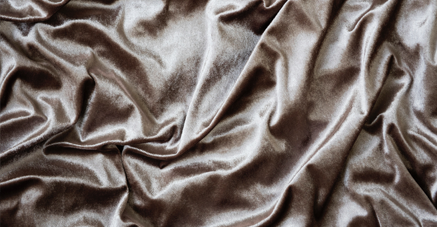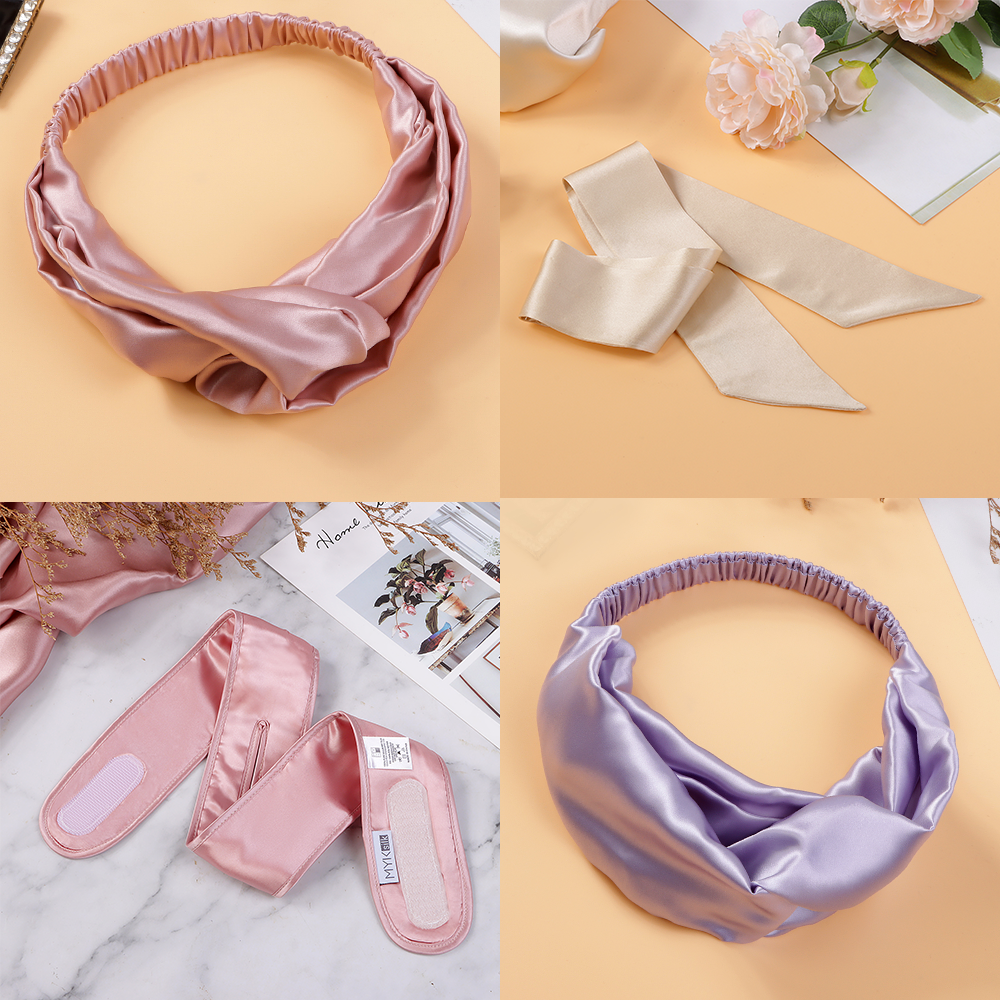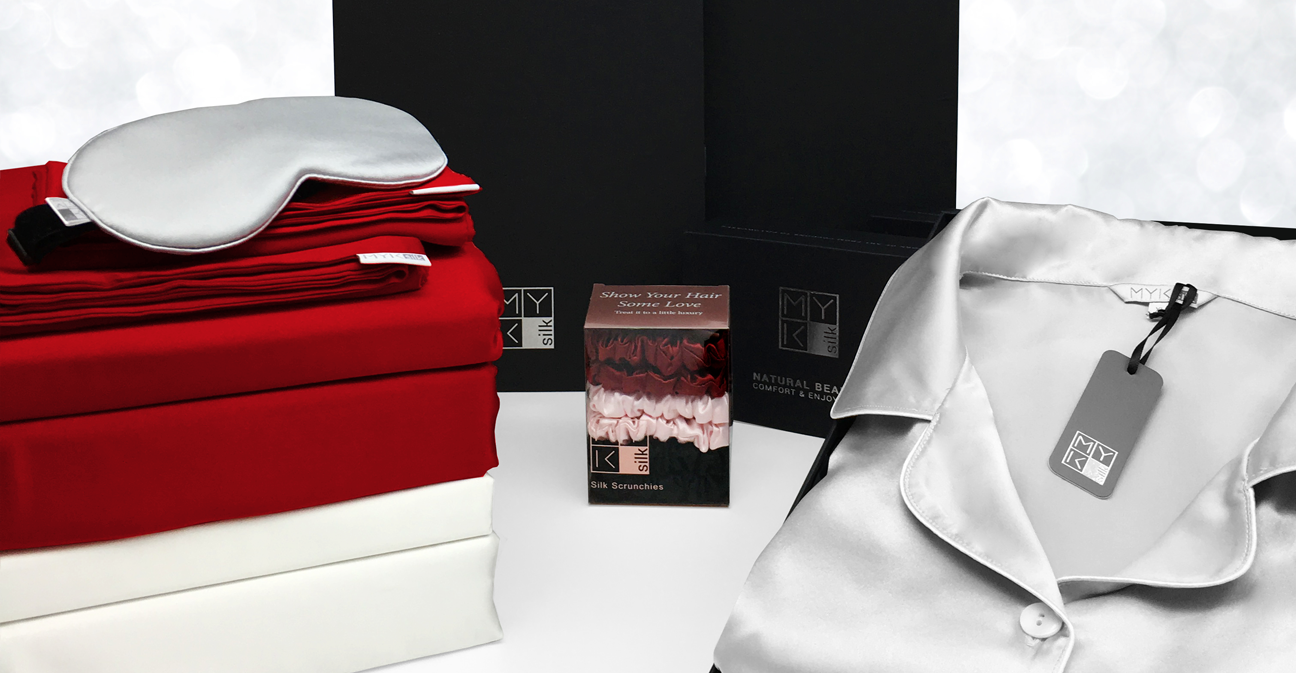
Polyester and Satin: What's the Difference?
Synthetic fabrics have exploded in popularity over the last decade, and the clear standard bearer is polyester. In fact, polyester is over twice as popular as the second most popular fabric, cotton: you probably own or are wearing something polyester right now.

What is Polyester?
Polyester is actually a type of flexible plastic. Yes, that’s right: your satin robe, your fleece jacket, and the water bottle you got with your lunch are all made of the same material. Plastic really is everywhere.
Polyester comes in a variety of weaves and is often blended with other fabrics. A lot of times it will also be woven in a way that imitates more expensive fabrics like silk or wool. Companies will typically name it a little deceptively as well - a lot of items, like most satin or fleece garments, are actually polyester in disguise.

Why is Polyester Used?
Polyester has a lot of useful qualities: it’s durable (it’s plastic, remember?), can be washed and treated harshly, doesn’t wrinkle, can be made slippery so it feels softer than it is, can be easily mixed with other fabrics, and, most importantly, it’s super cheap.
Cheap and convenient: the fast food of clothing. Unfortunately, just like fast food, it isn’t very good for you.

Polyester’s Hidden Dangers
Polyester, as a plastic, is technically a type of polymer. Polyester itself is non-toxic, but the raw materials it’s made out of are extremely toxic: many are even carcinogens.
Artificial polymers are made by combining a number of smaller chemicals together into a final finished product: this final polymer is made of billions of submicroscopic chains. While these chains aren’t big enough to see, they are much longer and larger than normal molecules.
These chains are long enough that they often trap the very toxic raw materials inside of them. What does that mean? It means a lot of polyesters will slowly release these poisons over time while you wear them. Obviously, this is a health risk, and it becomes particularly serious in the summer since you’re sweating more, which makes it easier to absorb more of these dangerous chemicals.
A number of high end brands are beginning to implement better manufacturing practices out of fear of future lawsuits, but that going take a lot of time. Unfortunately, there aren’t any governmental agencies primarily focused on the safety of your clothing, and laws haven’t been properly written to account for the risks involved in the production of polyesters, so low end manufacturers get away with some pretty dangerous practices.

It’s Even Worse for the Environment
Sadly, polyester is even worse for the environment than it is for you. Not only does manufacturing it release those dangerous chemicals we just talked about, the dyes used for polyester fabrics are even worse for the environment (and workers) than normal dyes.
It’s illegal, but the toxic chemicals used to create polyester are almost always disposed of in the local water supply - either in rivers or the ocean. Cancer causing chemicals from manufacturing polyester often end up in the groundwater near residential and agricultural areas, poisoning nearby drinking water sources.
Obviously this harms cute animals, but it’s also pretty bad for workers and anyone who needs to drink from local water sources. The water is often treated before people drink it, but even the best filtration system can’t remove all traces of the chemicals.
Even if you ignore its manufacturing impact, the very act of washing polyester hurts the environment: polyester is the source of the majority of microplastics found in the ocean around developed countries. In fact, polyester releases 4,000 fibers per gram of fabric each time it’s washed!

Cheap Polyester is Usually Bad Polyester
In the same way there’s a huge difference between cheaply made plastic utensils and expensive plastic utensils, there’s also a huge difference between cheap polyester and expensive polyester. Every one of polyester’s problems becomes more serious in cheap polyester.
It’s more likely to have something toxic on it, it releases more harmful chemicals into the environment, releases more plastic into the water, and, worst of all, it’s far less durable.
Well made clothing can last for nearly a decade, but something cheaply made will be lucky to make it through two years. Even if that polyester blouse was only $15, you might end up spending more than $60 total replacing it every couple of years, whereas a more expensive but well-made blouse might last 8 years or more!

The Lowdown
Polyester is a useful material, but given its health risks and harmful environmental impact, you should never make it the mainstay of your wardrobe. It has its place, especially when blended with other fabrics, but you should always keep its issues in mind when you buy it, especially when the clothing is going to be touching bare skin.





Leave a comment
This site is protected by hCaptcha and the hCaptcha Privacy Policy and Terms of Service apply.